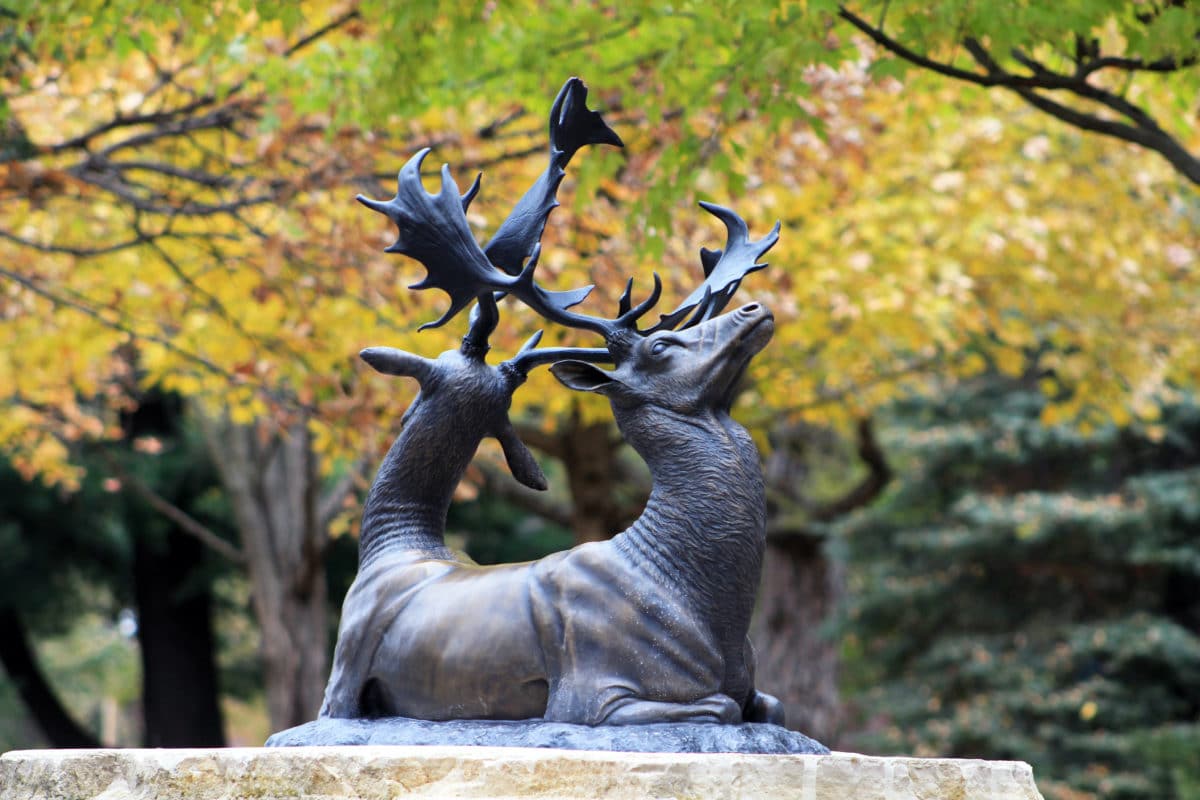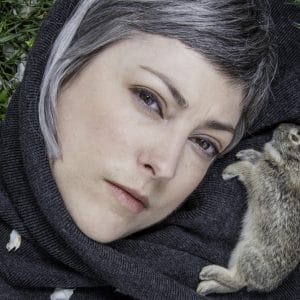


The Black Crown of Perpetual Loss
The Black Crown of Perpetual Loss builds upon artist Larassa Kabel’s frequent use of animals to explore difficult truths about love and death. Inspired by a small Bronze Age figure in The Menil Collection of Houston, TX, Kabel’s bronze sculpture uses a two-headed stag to represent the intrinsic ties between love and loss.
The stags are modeled on fallow deer, a species bred worldwide for their beauty and collectibility as trophies. The head with the erect ears represents love while the head with the ears tipped down represents loss and was modeled after a photograph of a dead stag that was being held up by a hunter.
The dimensions of this unique cast bronze sculpture are 45 x 47 x 31 inches (114.3 x 119.38 x 78.74 cm). It the first long-term, public art commissioned by The Avenues, a consortium of property and business owners and neighbors on Grand Avenue and Ingersoll Avenue who are working together to promote this historic area on the west side of Des Moines, Iowa.
The Black Crown of Perpetual Loss is installed on the lawn of the Plymouth Place apartment building which is listed on the National Register of Historic Places.
Love is an essential and mysterious force in our lives, but our culture ignores the reality that grief is the price of love.
The truth is that love, like everything else, will eventually end. We are so afraid of the pain of loss that we pretend it will never happen. I think this is a huge mistake. By acknowledging the temporary nature of our relationships, we are more likely to appreciate what we have while we have it.
I am interested in the ways that people try to hold on to something they love for “forever”. The irony that someone would harvest a deer in order to recreate it as a taxidermy mount, a lesser version of itself, is fascinating.
Larassa Kabel
